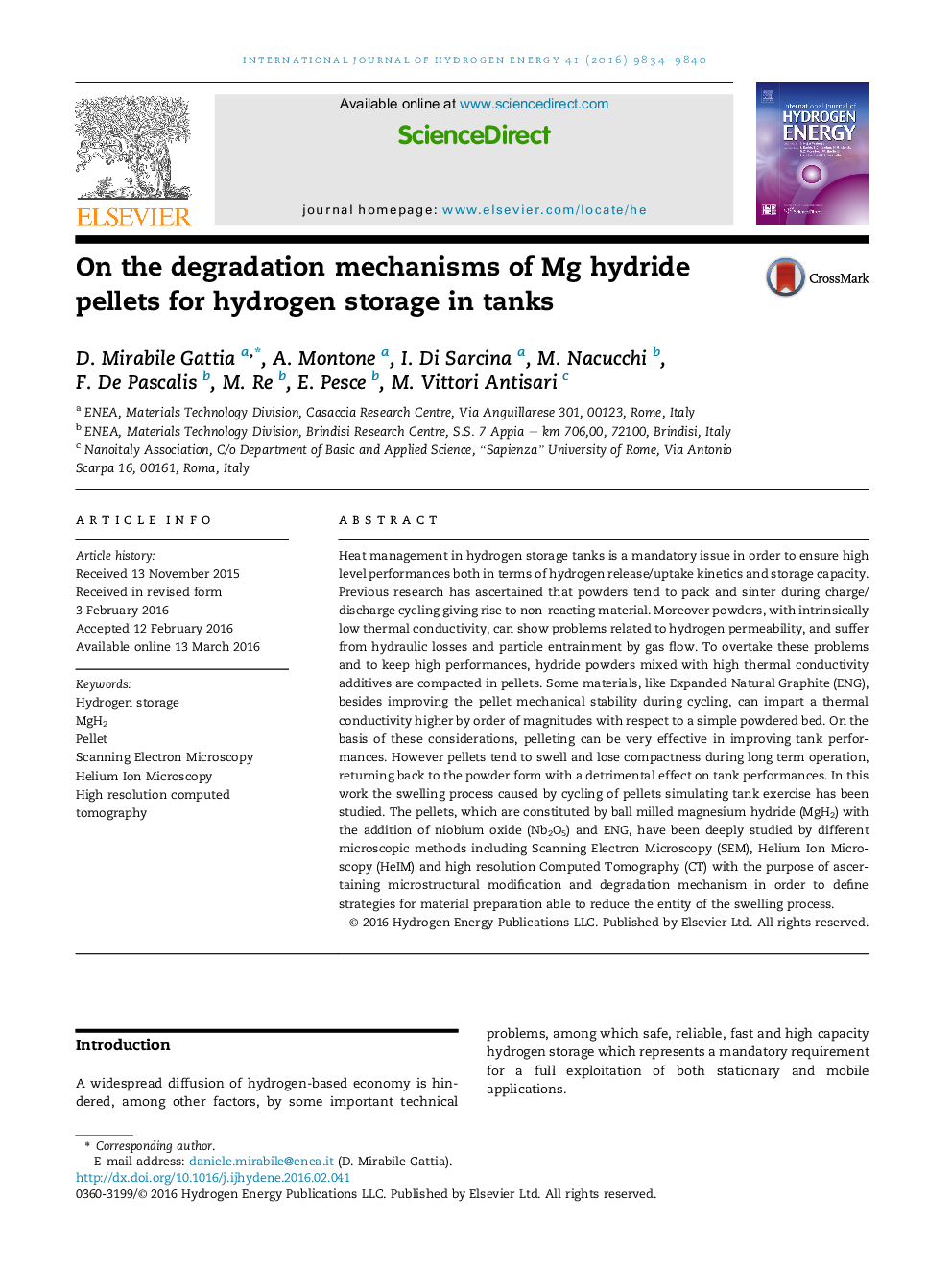| Article ID | Journal | Published Year | Pages | File Type |
|---|---|---|---|---|
| 1277034 | International Journal of Hydrogen Energy | 2016 | 7 Pages |
•Compacted powders were prepared by ball milling MgH2 with Nb2O5 and ENG.•Compacted powders have been cycled to study swelling mechanism.•Computed Tomography revealed the microstructure of the whole pellet before and after cycling.•SEM images highlighted different particles' morphology of cycled respect to as-milled ones.•High resolution Helium Ion Microscopy imaging showed recrystallization of MgH2.
Heat management in hydrogen storage tanks is a mandatory issue in order to ensure high level performances both in terms of hydrogen release/uptake kinetics and storage capacity. Previous research has ascertained that powders tend to pack and sinter during charge/discharge cycling giving rise to non-reacting material. Moreover powders, with intrinsically low thermal conductivity, can show problems related to hydrogen permeability, and suffer from hydraulic losses and particle entrainment by gas flow. To overtake these problems and to keep high performances, hydride powders mixed with high thermal conductivity additives are compacted in pellets. Some materials, like Expanded Natural Graphite (ENG), besides improving the pellet mechanical stability during cycling, can impart a thermal conductivity higher by order of magnitudes with respect to a simple powdered bed. On the basis of these considerations, pelleting can be very effective in improving tank performances. However pellets tend to swell and lose compactness during long term operation, returning back to the powder form with a detrimental effect on tank performances. In this work the swelling process caused by cycling of pellets simulating tank exercise has been studied. The pellets, which are constituted by ball milled magnesium hydride (MgH2) with the addition of niobium oxide (Nb2O5) and ENG, have been deeply studied by different microscopic methods including Scanning Electron Microscopy (SEM), Helium Ion Microscopy (HeIM) and high resolution Computed Tomography (CT) with the purpose of ascertaining microstructural modification and degradation mechanism in order to define strategies for material preparation able to reduce the entity of the swelling process.
